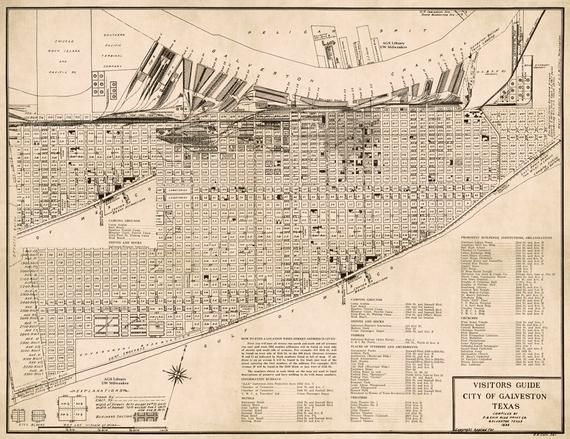The Galveston Plan, a significant yet often overlooked initiative in Jewish immigration history, aimed to establish a refuge for Jewish immigrants in the United States during the early 20th century. During a time when many were fleeing Europe’s rising anti-Semitism, this plan sought to redirect the influx of Jewish newcomers from the crowded shores of Ellis Island to Galveston, Texas. Spearheaded by the Jewish Territorial Organization, the plan illustrated an alternative vision of Zionism that deviated from the traditional focus on establishing a homeland in Palestine. Through the efforts of figures like Jacob Schiff and Rabbi Henry Cohen, the Galveston Plan represented a hopeful response to the urgent need for safe harbor, reflecting the complexities and challenges faced by Jewish exiles. This narrative not only highlights the resilience of those seeking a place to call home but also enriches our understanding of Zionism and the broader history of Jewish exiles in the modern era.
The initiative known as the Galveston Plan epitomizes a pivotal moment in the evolution of Jewish settlement strategies during the tumultuous years of the late 19th and early 20th centuries. This ambitious project was orchestrated by the Jewish Territorial Organization as they endeavored to facilitate the relocation of Jewish immigrants from Europe to less congested locales in America, specifically targeting Galveston, Texas, as a new cultural and social hub. Rather than adhering strictly to the traditional aspirations of Zionism, this plan acknowledged the practical plight of many Jewish families seeking safety and opportunity beyond the confines of European persecution. By utilizing a strategic approach that included community engagement and support from local leaders, the Galveston initiative sought to foster a dispersed Jewish presence across America, which has since contributed multifaceted layers to Jewish immigration history. This exploration of alternative settlements not only broadens our grasp of Jewish diasporic narratives but also raises questions about identity, cultural assimilation, and the quest for belonging.
The Historical Context of Jewish Immigration
At the turn of the twentieth century, Jewish immigration to the United States surged, largely in response to rising antisemitism and violence across Europe. Hundreds of thousands fled the oppressive regimes and pogroms, particularly in Eastern Europe, seeking refuge and a brighter future. This mass exodus contributed to the rich tapestry of American society, introducing diverse cultures and traditions, as well as shaping the early demographic landscape of cities like New York. The urgency for establishing safe havens led many Jewish leaders to explore options beyond Ellis Island and the Eastern Seaboard.
As Jewish communities grew in America, the desire for a homeland—principally in Palestine—remained a focal point of Zionism. However, this sentiment coexisted with practical considerations, leading to the establishment of alternatives like the Jewish Territorial Organization (ITO). This organization sought to identify viable homelands for Jewish refugees, as the failures in Palestine due to political instability and natural barriers prompted a reevaluation of the Zionist approach. Ultimately, the historical context of Jewish immigration at this time reflects a blend of idealism, urgency, and pragmatism.
The Jewish Territorial Organization and the Galveston Plan
The Jewish Territorial Organization emerged from a need to reimagine Jewish settlement options, particularly as the active push for a Jewish state in Palestine sometimes seemed unattainable. The Galveston Plan represented one of the organization’s most ambitious efforts. It sought to redirect Jewish immigrants arriving in the U.S. from Ellis Island to the less populated Galveston, Texas. This initiative, spearheaded by leaders such as Israel Zangwill and David Jochelman, highlighted the desperation and innovation of a well-meaning organization trying to provide secure environments for Jews escaping persecution.
Despite the noble intentions behind the Galveston Plan, it faced significant challenges, including a lack of willingness from many immigrants who equated America with New York. The project’s idealism clashed with the realities on the ground. As thousands of Jews arrived in Galveston, finance and support for their resettlement dwindled, leading to the eventual abandonment of the plan after just a decade. This complexity reveals both the optimism and limitations of the ITO’s vision, where the need for a homeland clashed with the practicalities of migration and settlement in a foreign land.
While the Galveston initiative ultimately fell short, it serves as a testament to the lengths Jewish leaders were willing to go to explore alternatives to traditional Zionism. Understanding this aspect of Jewish immigration history provides valuable insight into the various responses to displacement and persecution, illustrating how the past informs present narratives regarding identity and belonging.
Rachel Cockerell’s ‘Melting Point’: A Narrative of Exile
In her groundbreaking work, Rachel Cockerell’s “Melting Point” constructs a narrative that intricately weaves together personal stories with historical documents, providing a multifaceted look at the Jewish experience during a time of upheaval. By leveraging primary sources, Cockerell authentically brings the voices of her ancestors and other contemporaneous figures to life, allowing readers to witness their struggles and aspirations amidst the broader context of Jewish territorial ambitions. This narrative technique challenges traditional historical storytelling, inviting readers into a more immersive and emotional understanding of the past.
Cockerell’s focus on the Jewish Territorial Organization and the Galveston Plan underscores the complexities of identity faced by Jewish immigrants. Her book doesn’t shy away from the failures and misconceptions surrounding these attempts at establishing a homeland, emphasizing the multifaceted feelings of hope and despair among the exiled. The stories of her family, intertwined with prominent figures of the time, illustrate the diverse sentiments surrounding assimilation, national identity, and the quest for belonging in a foreign land, making “Melting Point” both a family history and a broader commentary on Jewish immigration.
Zionism: From Ideals to Realities
Zionism has long been framed as a response to the centuries of plight experienced by Jews, with leaders such as Theodor Herzl advocating for a national homeland in Palestine. However, Cockerell illuminates how alternative visions emerged like the ITO, reflecting the tension between idealism and reality. Many Jewish leaders were torn between the dream of a sovereign state in the historical homeland of Judaism and the immediate need for refuge in the face of persistent violence against their people. This duality embodies the ongoing struggle within Zionism—not just a quest for a territory, but a complex negotiation of cultural identity and security.
As the narrative unfolds in “Melting Point,” readers can see the various interpretations of Zionism emerge, questioning the validity and practicality of different proposed homelands. The perspectives within Cockerell’s work highlight that the concept of Zionism was not monolithic. Rather, it was shaped by the shifting landscapes of hope and desperation among Jews in diaspora, arguing for a broader understanding of Jewish identity that encompasses both the historic claims to Palestine and the practical settlements sought elsewhere, such as Galveston.
The Impact of the Kishinev Pogrom
The devastating Kishinev pogrom of 1903 served as a pivotal moment in Jewish history, motivating many to seek refuge from the increasing violence and discrimination in Eastern Europe. Depictions of the brutal violence shocked global audiences, igniting widespread sympathy for Jewish communities and intensifying the urgency for establishing safe havens. This massacre profoundly impacted political discourses among Jewish leaders, effectively shifting their focus toward immediate emigration solutions, such as the ones proposed by the ITO.
The ramifications of Kishinev extended beyond immediate migration pressures; it also shifted public perception regarding the necessity of a Jewish state. The brutal realities faced by Jews in the diaspora compelled leaders like Herzl and Zangwill to revise their strategies and broaden the scopes of their plans. Cockerell’s account illustrates how such events informed the Zionist movement while simultaneously fueling initiatives like the Galveston Plan, emphasizing the complexities of longing for a homeland amid waves of persecution and exile.
Exploring Jewish Identity Through Ancestry
Exploring one’s ancestry can reveal the interconnectedness of personal histories and broader cultural narratives. Cockerell’s recounting of her family’s journey highlights the many layers of Jewish identity—each story rooted in experiences of migration, aspiration, and often tumultuous change. Her work shines a light on how the collective memory of Jewish immigrants informs the identities of later generations, connecting contemporary Jewish individuals not only to their family’s past, but to the wider story of Jewish diaspora and resilience.
In understanding the personal dimensions of this genealogy, readers can appreciate how the stories of struggle and survival of previous generations shape our perceptions of identity today. Furthermore, Cockerell illustrates how these narratives are often complex and laden with contradictions, as individuals and families navigate the fine line between assimilation and cultural preservation—echoing the struggles represented in the historical movements surrounding Zionism and the Jewish Territorial Organization.
The Role of Women in Jewish Immigration Narratives
Female voices and experiences are often sidelined in the broader historical narratives of Jewish immigration and Zionism, yet their contributions are vital. Cockerell’s narrative invites the reader to consider the roles that women played in these movements, emphasizing that their stories intertwine with those of male leaders like Herzl and Zangwill. The experience of exile for women included not only the struggle for identity and belonging but also the pursuit of community and family amidst the challenges of immigration.
By featuring these perspectives, Cockerell enriches the historical discourse around Jewish immigration, allowing for a more nuanced understanding of the factors that influenced settlement patterns, including the Galveston Plan. Women’s experiences were central to community-building efforts and cultural retention. Their narratives reflect resilience, agency, and the complexities of striving to forge new lives while holding onto ancestral ties, proving integral to the Jewish fabric in America.
The Future of Jewish Diaspora and Identity
Cockerell’s exploration of Jewish identity does not merely recount the past but also invites reflection on the future of the Jewish diaspora. As the stories transform through generations, they challenge contemporary communities to consider how they should navigate cultural heritage, assimilation, and geopolitical concerns regarding Israel and the Jewish state. The complexities posed by modernity and globalization require a reevaluation of what it means to be Jewish in today’s world.
As demonstrated in “Melting Point,” the ongoing dialogue between cultural preservation and adaptation continues to resonate within Jewish communities. The legacies of past movements, including those represented by the Galveston Plan and Zionism, provoke critical conversations about identity and belonging. By examining these themes, Cockerell presents a call for understanding and reflection by contemporary Jewish individuals, highlighting how history influences current identities and the evolution within Jewish culture.
The Melting Pot Metaphor in Jewish Culture
The metaphor of the “Melting Pot” has been significant for Jewish immigrants in the United States, reflecting themes of assimilation and cultural blending. Zangwill’s play of the same name epitomized a vision of American identity, suggesting that all immigrant groups, including Jews, could coalesce into a singular national identity while retaining their unique roots. This idea resonated deeply with many Jewish immigrants who sought both acceptance and a fresh start in their new home.
However, examining the implications of this metaphor in the context of Cockerell’s narrative reveals the complexities of cultural pride and the fear of losing heritage. As immigrants wrestled with the dichotomy of becoming ‘American’ while honoring their Jewish identities, this tension became a central theme within the broader discourse of Jewish assimilation. Cockerell’s focus on these contrasting perspectives invites readers to reflect on the ongoing negotiation of identity within the “Melting Pot,” accentuating the challenges and triumphs that have shaped Jewish American life.
Frequently Asked Questions
What was the Galveston Plan and how did it relate to Jewish immigration history?
The Galveston Plan was an initiative by the Jewish Territorial Organization in the early 20th century aimed at redirecting Jewish immigrants from Ellis Island to Galveston, Texas. This plan was part of a broader attempt to create a new Jewish homeland outside of Palestine, reflecting the desperation of some Jewish exiles to find a secure place to live amid rising antisemitism in Europe.
How did the Jewish Territorial Organization influence the Galveston Plan?
The Jewish Territorial Organization played a pivotal role in the Galveston Plan by advocating for a Jewish homeland outside Palestine. Leaders like Israel Zangwill, who founded the organization, were driven by the urgent need for safe havens for Jewish refugees fleeing persecution, thus they targeted Galveston as a viable entry point for Jewish immigrants into the United States.
What impact did the Galveston Plan have on Zionism?
The Galveston Plan presented an alternative to the mainstream Zionist idea of establishing a Jewish state in Palestine. It emphasized integration within American society, challenging traditional Zionist views. Key figures, such as Zangwill and Jochelman, believed that Jews could thrive in a multicultural American environment, which diverged from the goal of a specific national state in Palestine.
Who were some notable figures involved in the Galveston Plan and how did they shape its course?
Key figures involved in the Galveston Plan included Israel Zangwill, a proponent of the Jewish Territorial Organization, and David Jochelman, a leading advocate for the plan. Their efforts aimed to secure a safe passage for Jewish immigrants to the U.S., and they established networks that facilitated the entry of about 10,000 Jews into Galveston between 1907 and 1914.
What were the reasons for the eventual failure of the Galveston Plan?
The Galveston Plan ultimately failed due to several factors, including the logistical challenges of transatlantic travel during that era, which made the journey to Galveston significantly longer than to New York. Additionally, the onset of World War I in 1914 halted most immigration, contributing to the project’s closure.
How does Rachel Cockerell’s ‘Melting Point’ relate to the history of Jewish exiles and the Galveston Plan?
Rachel Cockerell’s ‘Melting Point’ explores the contrasting narratives of Jewish identity, exile, and immigration, focusing on primary sources to illustrate the complexity of the Galveston Plan. The work highlights the broader context of Jewish history during a time when many sought refuge and a place to belong, reflecting on the struggles of Jewish exiles and their various attempts to forge new lives.
What were the societal perceptions of Galveston as a destination for Jewish immigrants in the early 1900s?
In the early 1900s, many Jewish immigrants viewed Galveston with skepticism, as they traditionally aimed for New York, a city synonymous with the American dream. However, advocates for the Galveston Plan worked hard to reframe it as a hopeful alternative, viewing it not just as a port but as a hub for building Jewish communities across the American Southwest.
What key themes does ‘Melting Point’ address regarding Jewish identity and the Galveston Plan?
‘Melting Point’ explores themes of identity among Jewish immigrants, the complex interplay between assimilation and cultural preservation, and the challenges of finding a homeland. By examining the Galveston Plan, Cockerell raises questions about the meaning of belonging and the sacrifices made by those who sought refuge during difficult times.
What legacy did the Galveston Plan leave on the American Jewish community?
Despite its short-lived nature, the Galveston Plan established a legacy within the American Jewish community by emphasizing the importance of adaptation and resilience. Many American Jews today trace their roots back to those who arrived through Galveston, highlighting the profound impact of diverse immigration routes on Jewish American identity.
How does the Galveston Plan reflect the historical context of Jewish migration during the early 20th century?
The Galveston Plan reflects the urgent need for safe migration routes during a time when Jews faced escalating violence and persecution in Eastern Europe. It underscores the desperation of Jewish communities to seek refuge and the innovative, albeit imperfect, solutions they pursued, shaped by the sociopolitical climate of the era.
| Key Aspects of the Galveston Plan | ||
|---|---|---|
| Initiative | The Jewish Territorial Organization | Redirect Jewish immigration from Ellis Island to Galveston, Texas. |
| Historical Background | Early 1900s initiation | Established during a surge of Jewish immigration driven by persecution in Europe. |
| Key Figures | Theodor Herzl, Israel Zangwill, David Jochelman | Promoted the cause of Jewish settlement outside of Palestine. |
| Philosophy | Emphasis on integration in America | Belief in the U.S. as a ‘promised land’ for Jews. |
| Outcome | Short-lived initiative | By 1914, around 10,000 Jews settled in the U.S. through Galveston; the program ended due to World War I and logistical challenges. |
Summary
The Galveston Plan was a unique and ambitious initiative aimed at creating a new Jewish homeland in America during a time of widespread persecution in Europe. This plan not only highlighted the desperation and dreams of Jewish exiles seeking refuge but also reflected broader themes of identity and belonging for immigrants in a rapidly changing world. Ultimately, its short duration and limited success underscore the complexities of historical narratives around migration and the search for home, making the Galveston Plan a poignant chapter in the story of Jewish American history.



